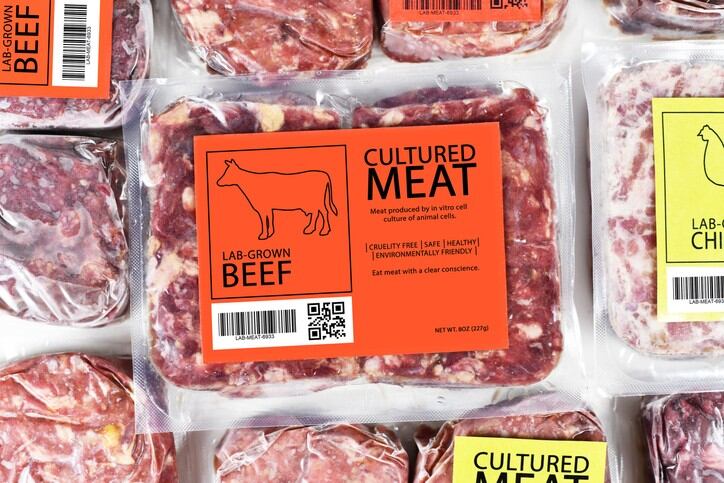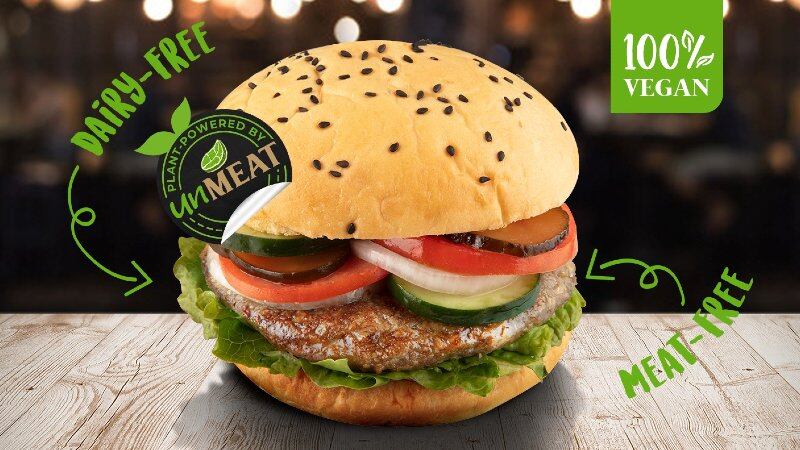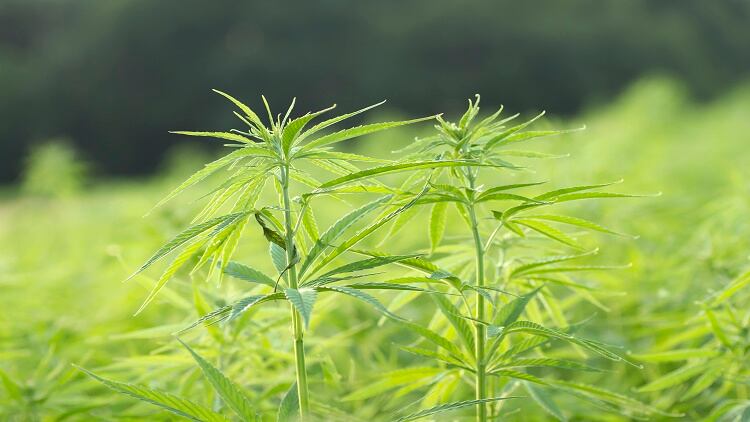Research from the Good Food Institute (GFI) has shown that it is possible for cultured meat costs to drop to as low as US$5.66 per kg by 2030 if enough governments opt to invest in cultured meat facilities, and other relevant cellular agriculture advances are made.
According to GFI senior scientist Dr Elliott Swartz, these results came from a modelling study based on a hypothetical cultured meat facility estimated to cost around US$450mn, which used both life-cycle assessment (LCA) techno-economic assessment (TEA) for analysis.
The facility would contain a lot of sophisticated equipment (e.g. proliferators, perfusion reactors), and also ‘quite a few’ of these would be needed to meet designated volumes (10,000MT of minced cultured meat) annually.
Importantly, one such facility is not expected to make much of a difference, as 100 such facilities would be needed to meet just 0.3% of the global meat demand by 2030 – so basically, more need to be built to make a difference, but with an estimated CAPEX of hundreds of millions of dollars each, it would be hard to make a significant dent without governmental assistance.
“Reducing the CAPEX burden is critical to the rate of scaling of the cultured meat industry and also to products reaching lower costs, and this could be a very rate-limiting step,” Dr Swartz told FoodNavigator-Asia.
“[That said, we believe that] governments could carry some of the investment burden in the form of subsidies – and as the industry scales up, learning curves could decrease perceived risks of investment.”
When asked how viable it is to consider that governments will shoulder, fully or partially, these investment burdens, he added that this is ‘impossible to predict’, but cited recent reports showing how government-linked ‘sustainable debt’ (bonds and loans raised for environmental or social purposes) has been increasing in recent years, so the cultured meat sector could also benefit.
“Government issuance of sustainable debt is increasing year-on-year and increasing across multiple sectors - No matter which way you cut it, governments will have to invest big in new infrastructure across multiple sectors to reach climate goals,” Dr Swartz told us.
“We think that the data [shows] that governments should have good reason to provide infrastructure support for cultured meat (and other alternative proteins).”
Specifically, he was referring to the LCA portion of the study, which highlighted how cultivated meat is able to reduce global warming impacts by up to 92% compared to conventional meat.
However, even if more governments do get on board with funding and investment, it was also highlighted that the final prices which consumers will see in supermarkets are still in the hands of manufacturers and the other corresponding, non-production costs.
“Lower costs equate to lower prices of course but we do not have enough data on how much manufacturers will spend on other components that contribute to prices,” said Dr Swartz.
“The price tags in supermarkets would also have to take into account additional overheads such as marketing, sales, room for profit and so on.”
All of these would of course return to each manufacturers’ long-term motivation for social and environmental improvements.
Other cost considerations
In addition to CAPEX considerations, the study also assumed that the industry’s current most significant cost hurdle – cell culture medium - had already been overcome. According to Dr Swartz, cell culture medium accounts for 99% of cultured meat production costs today, with 99% of those costs coming from recombinant proteins and growth factors in the medium.
“Out of [the latter] 99% of costs, recombinant albumin which is used to carry nutrients to cells makes up 80% to 95% depending on efficiency, so there is a significant opportunity here to reduce or eliminate albumin from the medium – some firms have already found workarounds, so I believe this is possible,” he said.
“When media no longer dominates the costs, the overall cost will drop to about US$17.50 per kg and then other advances such as scaling growth factor production and food-grade purification. On a technical basis, these cost reductions are achievable with existing fermentation processes and infrastructure today.
“On a market basis though, the cultured meat industry likely still needs to scale and de-risk itself for recombinant protein suppliers to justify creating batches of proteins at the low costs demanded by the cultured meat industry - As a guess, it’s likely that cultivated meat manufacturers will have access to the growth factor prices modeled in the TEA within three years [and] as the cultured meat industry scales, those costs will drop even further.
“[That, in addition to bringing down the aforementioned investment and CAPEX costs] could bring costs down to as low as US$5.66 per kg - Beyond that, electricity becomes the dominant cost, and this is where sourcing affordable sustainable energy would help to lower costs even further.”
Sustainability
Along these lines, Dr Swartz said that it would be ideal for manufacturers to locate their future facilities in places with access to sustainable energy, as this would make a huge difference not only for future costs but also to the environmental footprint.
“[We examined] scenarios for conventional energy mixes based on predicted global averages from state policies in 2030 - about 56% fossil fuels [and] sustainable energy (50% wind, 50% solar, heating from geothermal heat),” he said.
“[This aims to arm] the industry with data that should incentivise cultured meat manufacturers to source sustainable energy. [It] is more likely that the average of all cultured meat production facilities in the near future will fall somewhere in the middle for the environmental impacts given [as not] all manufacturers will use fully sustainable energy mixes right away.”
When queried on what cultured meat manufacturers without the financial or geographical means to use sustainable energy should do, Dr Swartz said: “Manufacturers will have many options available to them (wind, solar, hydroelectric, nuclear, and geothermal) when it comes to the selection of sustainable energy – [and] they can also install sustainable energy at or near their facilities.
“Given this array of options, it is difficult to imagine that many manufacturers would not have any options for sustainable energy use — there will just be a difference in how easily (or affordably) sustainable energy can be deployed.”
Future of the industry
Dr Swartz also added that the future of cultured meat over the next decade is expected to look like the brewing industry in terms of facilities and sites.
“The facility in the [study] is very large in terms of its volumetric capacity - It is highly likely that most facilities in the next 10 years will be smaller than this,” he said.
“As the industry scales and becomes more efficient, the ability to attract larger investments for larger facilities should become easier. It is very likely that the future of cultured meat production will involve both large, centralized facilities (located in more rural areas) and smaller, decentralized facilities (located in more urban areas).
“You can think of this like the brewing industry, with larger facilities making up the bulk of production volume and smaller microbreweries to fill out demand and niche spaces.”
Governments are also increasingly showing interest in the cultured meat space – Singapore gave the world’s first approval for cultured chicken last year.





